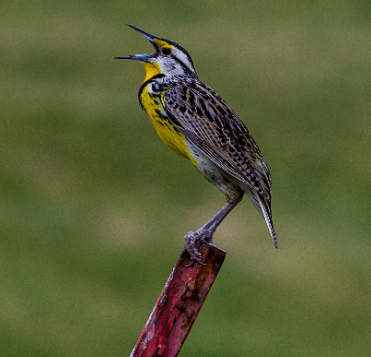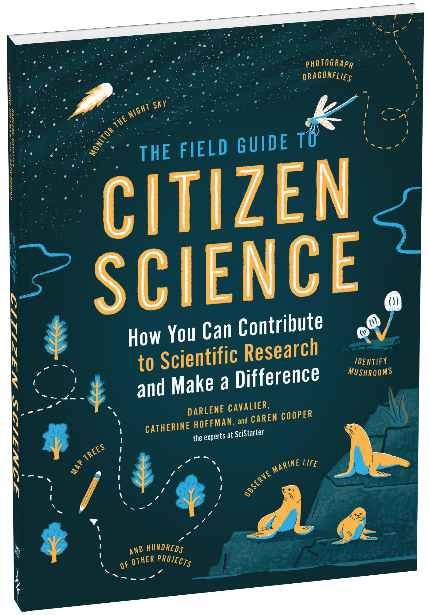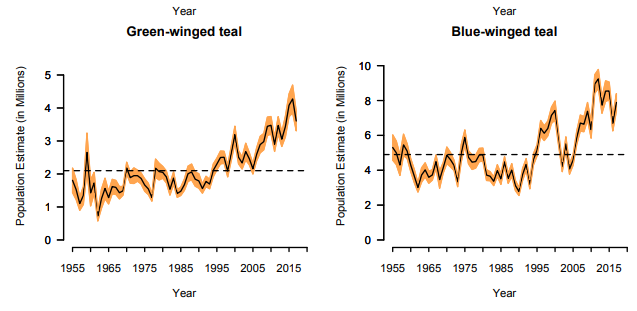Can you imagine not being able to hear a bubbling brook or songbird call? Over 600,000 people in the United States are not able to hear these sounds – and more – because of hearing impairments. Use your sense of hearing to learn about the natural wonders of our feathered friends ahead of World Migratory Bird Day, held in May each year.

These enrichments accompany Activity 4, Sounds Around, found in Project Learning Tree’s PreK-8 Environmental Education Activity Guide. Be sure to check out the full activity!
Essential Question: How many unique bird species can you identify using only their song?
Task: Select an outdoor location that is easy and safe to access. This might be your backyard or a local park. Remain quiet for at least 15 minutes, listen for bird calls, and record the sounds using a cell phone or other digital recorder. Replay your recordings and try to identify the different bird species by their unique calls. Submit your bird lists to eBird.
NGSS Connections:
- MS-LS2-1: Ecosystems: Interactions, Energy, and Dynamics – Analyze and interpret data to provide evidence for the effects of resource availability on organisms and populations of organisms in an ecosystem.
- MS-LS2-4: Ecosystems: Interactions, Energy, and Dynamics – Construct an argument supported by empirical evidence that changes to physical or biological components of an ecosystem affect populations.
- MS: Science and Engineering Practices, Developing and Using Models – Develop a model to generate data to test ideas about designed systems, including those representing inputs and outputs.

STEM Strategies
Science: Have you ever tried counting different bird species in your backyard, schoolyard, or park and reporting your findings?
Citizen science is defined as “the practice of public participation and collaboration in scientific research to increase scientific knowledge.” You don’t need a formal education to be a citizen scientist, just a desire to be engaged with others in data collection and a willingness to submit your results to scientists.
The oldest example of citizen science is the Christmas Bird Count, which was started in 1900 by the National Audubon Society and runs from December 14 through January 5 each year. For over 20 years, the Cornell Lab of Ornithology and the National Audubon Society have sponsored the Great Backyard Bird Count in February. This is a fun event that can be enjoyed by all ages, and it is an “owlstanding” example of citizen science.

Technology: There are many apps that can help to identify birds. One example – Bird Song Hero – provides a visual display of a bird’s song using a spectrogram. This is a fun activity for everyone! Train your ear and your mind to become a better birder. The Merlin Bird ID app uses three key observations, namely size, location, and coloration, for bird identification. Once you have identified a bird, check Bird-sounds.net to research your birds and listen to learn their call. Birding by ear is a great skill, as one is much more likely to hear a bird than to see it.

Engineering: Did you know Mother Nature is an amazing engineer? A prime example of this can be found in the silent flight of an owl. Did you know that the tips of an owl’s wing feather look like the teeth of a comb? You can design a model to test this phenomenon; all you need is two pieces of cotton rope (about 3 feet long and ¼ to ½ inches in diameter).
Pick one piece of rope and (carefully!!!) with a table knife or scissor edge, run up, down, and around the entire length of rope to fray the surface. To check your progress, pick up one end of the frayed rope, hold it out to your side with your elbow tight to your side, and rapidly twirl the rope. If your rope is not frayed enough, you will hear a faint whirring sound. If you do hear this sound, continue working on your rope and continuing testing. When you don’t hear the whirring sound, you are done. Now pick up the un-frayed rope and twirl it. What is the difference between the sounds the two ropes make?
Math: Counting birds either by hearing or seeing them produces the same results: a bird is confirmed. Knowing the number of birds counted each year provides scientists a better understanding of the population and distribution of a species. Use observation data collected by Audubon to examine bird populations in your state. Follow the directions provided and construct your own spreadsheet for any bird. Create graphs for any period of time between 1906 and the present day. Try picking the year you were born and compare those results to the most recent data.

Additional Resources
Don’t have PLT’s PreK-8 Environmental Education Activity Guide?
- Purchase a print guide or e-book, available from PLT.org, Amazon and other places where books are sold.
- Get it through your PLT State Coordinator along with hands-on professional development, alignments to state standards and other state-specific supporting resources.
Don’t consider yourself a formal teacher?
- Check out PLT’s Nature Activities for Families. We have 40+ nature activities for families that can be easily used by parents, grandparents, youth group leaders, nature centers, and other nonformal programs.


